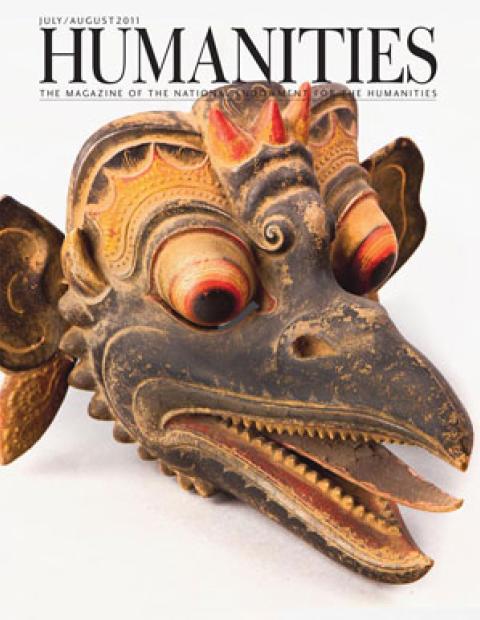In this issue we take in the legacies of two celebrated Americans, whose love of country was profoundly qualified. Robert E. Lee, proud Virginian and American soldier, fought for the Confederacy in the Civil War. And Henry James, the great novelist, disappointed by his country’s hesitation to enter World War I, surrendered his American citizenship. Though unusual cases, and quite different from each other, their histories help describe the American liberality that sometimes separates action from character.
James Cobb, professor of history at the University of Georgia, follows the trail of forgetting that helped America reunite after the war and made Lee’s iconization possible. Susan Goodman, professor of American literature at the University of Delaware, has adapted a chapter from her NEH-supported history of the Atlantic Monthly to describe how the expatriate James became a favorite of this Emersonian magazine. Defying common sense, editor William Dean Howells vouched for the American-ness of his great friend, James, after the author opted to become a British subject.
And yet, who would deny that Lee and James were American originals? Elastic phrase, that one, but it works.
Also in this issue, poet and editor Garrick Davis takes a look back at Understanding Poetry, the great college textbook of the forties and fifties written and edited, collaboratively, by one of the great critics and one of the great poets of that period, respectively, Cleanth Brooks and Robert Penn Warren. Read a few pages of its stately and confident survey of verse, and you’ll ask, Why don’t they make textbooks like that anymore? Of course, we think very differently nowadays about what freshmen ought to learn about poetry and the world, but it’s worth recalling the achievement from which we’ve digressed.
Away from the “American Scene,” as James called it, this issue reports on two major exhibits. “The Gifts of the Sultan” at the Los Angeles County Museum of Art offers a thrilling look at bejeweled generosity in various traditions of Islamic art. And “Bali: Art, Ritual, Performance” at San Francisco’s Asian Art Museum has enchanted visitors with a surprising mix of native art, tourist pieces, musical performance, and photography.
Since Marshall McLuhan coined the phrase, we’ve proudly talked about the “global village” as if technology and commerce could in a few decades reverse the effects of continental drift and unite what has been disparate for millennia. And yet, exhibitions such as these excite us, in part by showing that many leagues of difference—curious, fascinating difference—separate American life from other places and other ways of being human.

